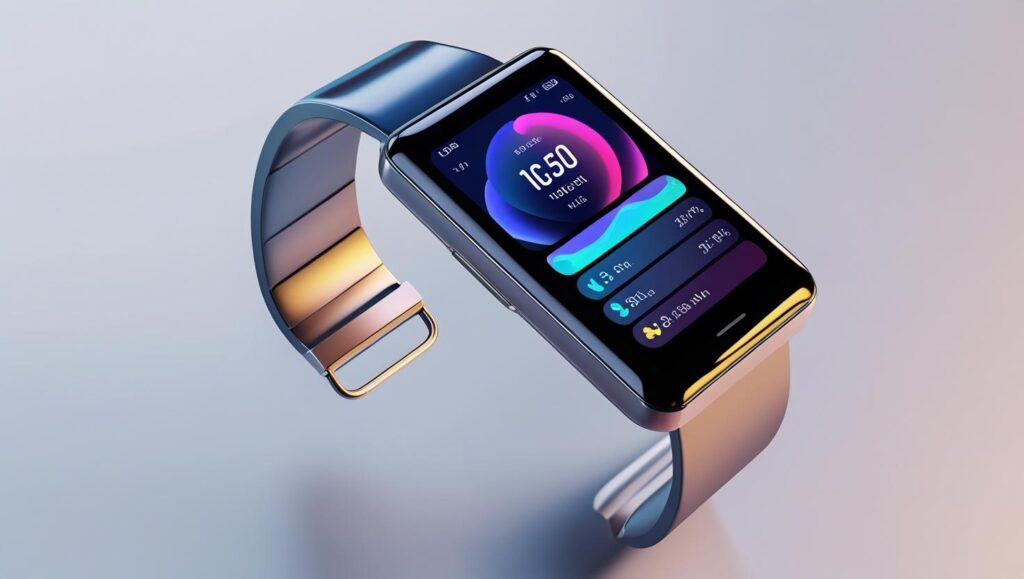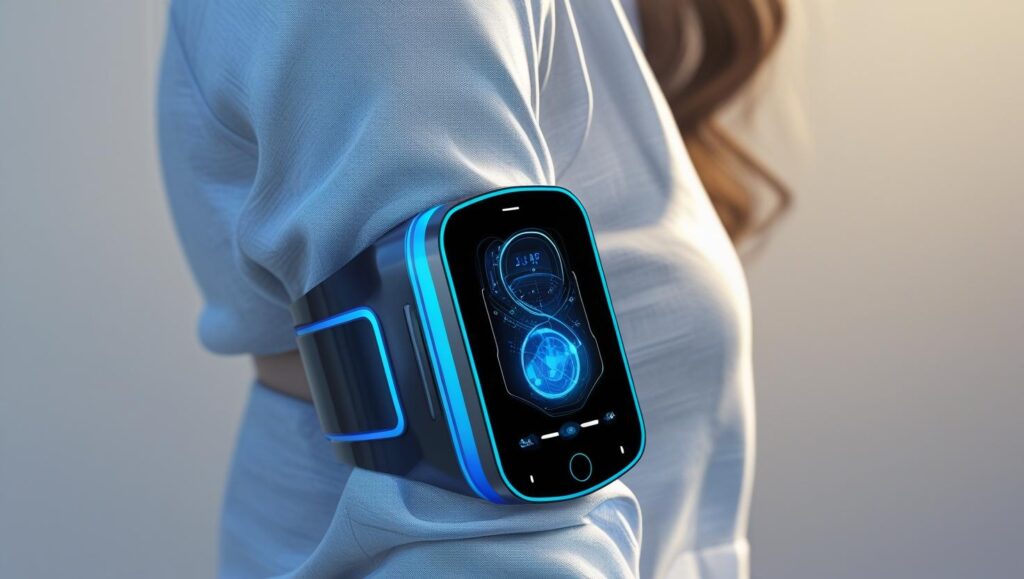The wearable electronics industry stands on the precipice of a monumental transformation, driven overwhelmingly by the relentless march of artificial intelligence. The profound AI integration in wearable electronics industry is no longer a futuristic concept but a tangible reality, reshaping how we interact with technology and monitor our well-being. From sophisticated smartwatches that offer real-time health diagnostics to smart clothing that seamlessly blends into our daily lives, AI is elevating wearable devices from simple data trackers to intelligent, proactive companions. This comprehensive exploration delves into the multifaceted aspects of AI integration in wearable electronics industry, examining its significant benefits, the emerging applications, the critical challenges that must be addressed, and the exciting trajectory of this dynamic sector.
The global wearable technology market size is expected to grow from USD 70.30 billion in 2024 to USD 152.82 billion by 2029, growing at a CAGR of 16.8% during the forecast period.

For decades, wearable electronics have been a part of our technological landscape, primarily focused on basic fitness tracking or notification delivery. However, the true revolution commenced with the deeper AI integration in wearable electronics industry. This integration has imbued devices with the capacity to not just collect data, but to comprehend, analyze, and learn from it, offering insights that were once confined to the realm of medical professionals. The ability of machine learning algorithms to process vast datasets, identify intricate patterns, and even predict future health trends is at the core of this paradigm shift. This enhanced intelligence means wearable devices can now offer truly personalized experiences, adapting to individual user habits, goals, and physiological responses, fundamentally altering the value proposition of these ubiquitous gadgets.
One of the most impactful areas witnessing the profound benefits of AI integration in wearable electronics industry is undoubtedly health monitoring and management. Smartwatches and fitness trackers, powered by advanced AI algorithms, are transforming preventive healthcare. These devices continuously monitor a wide array of vital signs, including heart rate variability, blood oxygen levels, sleep patterns, and even stress indicators. AI-driven analytics can detect subtle anomalies in these metrics, providing early warnings for potential health issues such as atrial fibrillation or impending diabetic complications. This proactive approach to health not only empowers individuals to take charge of their well-being but also significantly contributes to reducing hospitalizations and improving overall public health outcomes. The continuous, real-time data collection, interpreted by intelligent algorithms, allows for a level of personalized health insights that was previously unimaginable, fostering a more informed and preventative approach to health.
Beyond basic monitoring, the AI integration in wearable electronics industry is enabling advanced predictive analytics in healthcare. Imagine a wearable device that can predict the onset of a chronic condition based on long-term physiological data, or recommend tailored interventions to prevent a health crisis. This is becoming increasingly feasible with AI. Machine learning models, trained on extensive datasets, can identify complex relationships between lifestyle, biometric data, and health outcomes. This capability extends to chronic disease management, where AI-powered wearables can assist patients with conditions like diabetes or hypertension by predicting fluctuations and suggesting personalized dietary or activity adjustments. The impact on remote patient monitoring is also substantial, allowing healthcare providers to track patients’ health data without the need for frequent in-person visits, a critical advantage in an increasingly digitalized healthcare landscape. The precision and foresight offered by AI in this context are redefining the boundaries of personal health technology.
The realm of fitness and sports has also been profoundly reshaped by the significant AI integration in wearable electronics industry. AI-powered fitness trackers have evolved into virtual personal coaches, offering customized training programs that adapt in real-time to an individual’s performance, recovery, and goals. These intelligent devices analyze metrics like heart rate, oxygen levels, muscle fatigue, and activity history to suggest optimal workout intensities, rest periods, and even nutritional recommendations. The continuous feedback provided by AI ensures maximum efficiency in training and helps in injury prevention. Whether it’s a seasoned athlete aiming for peak performance or a beginner embarking on a fitness journey, AI-driven wearables provide the personalized guidance necessary to achieve tangible results. The seamless integration of these insights into daily life means that fitness is no longer confined to specific workout sessions but is an ongoing, intelligently monitored endeavor.
Moreover, the AI integration in wearable electronics industry is extending into exciting new domains such as smart clothing and e-textiles. These innovative garments, embedded with unobtrusive sensors and AI capabilities, offer a truly seamless and natural way to monitor biometric data. From shirts that track posture and muscle activity to socks that analyze gait and pressure points, smart clothing provides a discreet yet comprehensive health and performance monitoring solution. AI algorithms process the vast amounts of data collected from these intelligent textiles, offering insights into athletic performance, rehabilitation progress, or even the early detection of discomfort or injury. This burgeoning sector promises to revolutionize how we think about apparel, transforming it from mere covering to a sophisticated, intelligent interface with our bodies and environment.
The user experience is being fundamentally transformed by the sophisticated AI integration in wearable electronics industry. Wearable devices are becoming more intuitive, responsive, and truly personalized. AI algorithms learn individual user preferences, habits, and even emotional states, leading to highly tailored interactions. This can manifest in intelligent notifications that only surface when truly relevant, adaptive noise cancellation in smart earbuds that adjusts to ambient sounds, or even context-aware suggestions for managing stress. The goal is to create a seamless and almost invisible technological assistant that anticipates needs and proactively offers valuable insights, enriching daily life without being intrusive. This hyper-personalization is key to fostering deeper user engagement and making wearables indispensable tools rather than mere gadgets.
Despite the immense promise, the pervasive AI integration in wearable electronics industry also presents a unique set of challenges that require careful consideration and robust solutions. One of the foremost concerns revolves around data privacy and security. Wearable devices collect highly sensitive personal and health information, making them attractive targets for cyberattacks. Ensuring the secure storage, transmission, and processing of this data is paramount to maintaining user trust and preventing unauthorized access or misuse. Strict adherence to data protection regulations like GDPR and HIPAA is crucial, alongside the development of advanced encryption techniques and robust cybersecurity protocols. The ethical implications of continuous data collection and the potential for algorithmic bias are also critical considerations, demanding transparent AI models and responsible data governance frameworks.
Another significant challenge in the widespread AI integration in wearable electronics industry lies in the technical complexities of developing robust and accurate AI algorithms. Wearable devices often operate with limited computational power and battery life, necessitating efficient edge AI processing. Ensuring the accuracy and reliability of data collected from various sensors, especially in real-world, dynamic environments, can be challenging. Algorithmic bias, where models perform poorly across diverse demographics due to biased training data, is another hurdle that requires meticulous attention during development and continuous refinement. Furthermore, the sheer volume and velocity of data generated by wearables demand sophisticated data processing and analysis capabilities to extract meaningful insights effectively and in a timely manner.
Download PDF Brochure @ https://www.marketsandmarkets.com/pdfdownloadNew.asp?id=129733727
The impact of AI integration in wearable electronics industry on device design is also noteworthy. As AI capabilities become more sophisticated, the design of wearables is evolving to accommodate more advanced sensors, processors, and connectivity modules, all while maintaining sleek aesthetics, comfort, and extended battery life. The trend towards miniaturization and greater integration of technology into everyday objects is accelerating, driven by the demand for seamless user experiences. Designers are increasingly focused on creating devices that are not only functional but also fashionable and socially acceptable, ensuring that the technology remains discreet and unobtrusive. The interplay between hardware design and AI software is crucial for delivering optimal performance and a truly intuitive user experience.
Looking ahead, the future of AI integration in wearable electronics industry appears incredibly bright and dynamic. We can anticipate even more sophisticated health monitoring capabilities, including non-invasive real-time blood analysis and advanced diagnostic tools. The synergy between AI and augmented reality (AR) in smart eyewear will likely revolutionize fields like education, industrial training, and even daily navigation, offering context-sensitive information directly within the user’s field of vision. The development of more advanced AI chips specifically optimized for wearable devices, combined with advancements in battery technology, will further enhance performance and extend battery life, making these devices even more practical for continuous use. The potential for AI-powered wearables to integrate seamlessly with smart homes and smart cities, creating truly interconnected ecosystems, is also a compelling prospect for the years to come.

In conclusion, the transformative influence of AI integration in wearable electronics industry is undeniable, fundamentally reshaping how we approach health, fitness, and our interaction with technology. From empowering individuals with personalized health insights and predictive analytics to enabling sophisticated smart clothing and enhancing the overall user experience, AI is at the forefront of innovation in this sector. While challenges related to data privacy, security, and algorithmic development persist, the industry is actively working towards robust solutions. As AI continues to evolve and mature, wearable electronics will undoubtedly become even more intelligent, indispensable, and seamlessly integrated into the fabric of our daily lives, ushering in an era of truly proactive and personalized well-being. The continuous advancements in AI integration in wearable electronics industry promise a future where technology is not just an accessory, but an intelligent extension of ourselves, dedicated to enhancing our health, productivity, and overall quality of life.
FAQs
What is the primary benefit of AI integration in wearable electronics industry? The primary benefit of AI integration in wearable electronics industry is the ability to transform raw data collected by wearable devices into intelligent, actionable insights and personalized experiences. This includes advanced health monitoring, predictive analytics for health conditions, and customized fitness coaching, moving beyond simple data tracking to proactive guidance.
How does AI enhance health monitoring in wearable devices? AI significantly enhances health monitoring by enabling wearables to continuously analyze a vast array of biometric data, such as heart rate, sleep patterns, and activity levels. Through machine learning algorithms, AI can detect subtle anomalies, identify trends, and provide early warnings for potential health issues, leading to more proactive and preventative healthcare.
What are some emerging applications of AI in smart clothing? Emerging applications of AI integration in wearable electronics industry within smart clothing include garments embedded with sensors that can track posture, muscle activity, and even gait analysis. These AI-powered textiles offer discreet and continuous monitoring for athletic performance, rehabilitation, and general well-being, providing a seamless interface between technology and apparel.
What are the main challenges associated with AI integration in wearable electronics industry? The main challenges associated with AI integration in wearable electronics industry include ensuring robust data privacy and security for sensitive personal and health information, developing accurate and unbiased AI algorithms that perform reliably across diverse user populations, and managing the technical complexities of processing large volumes of data on resource-constrained devices.
How does AI contribute to a more personalized user experience in wearables? AI contributes to a more personalized user experience by learning individual user habits, preferences, and even emotional states from collected data. This allows AI-powered wearables to offer tailored recommendations, intelligently filtered notifications, and adaptive functionalities that anticipate user needs, making the devices more intuitive and seamlessly integrated into daily life.
What is the future outlook for AI integration in wearable electronics industry? The future outlook for AI integration in wearable electronics industry is very promising, with expectations for even more sophisticated health diagnostics, non-invasive monitoring technologies, and deeper integration with augmented reality in smart eyewear. Continued advancements in AI chips and battery technology will further enhance the capabilities and practicality of these intelligent devices, leading to increasingly interconnected and proactive personal technology ecosystems.
